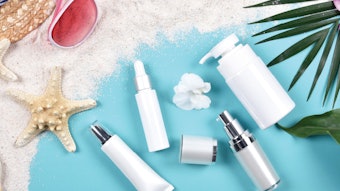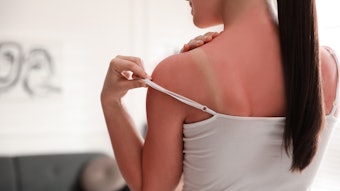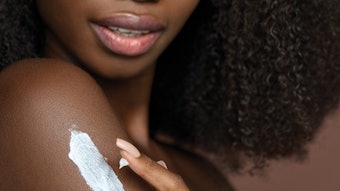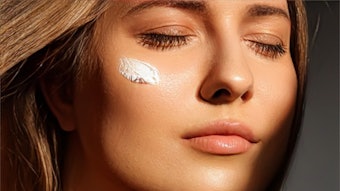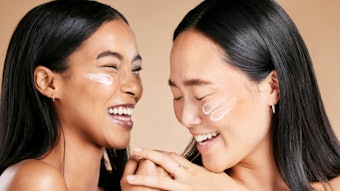“Fry now, pay later.” These ominous words are from a recent skin cancer awareness advertising campaign. Unfortunately, they are100% accurate when it comes to the sun and your skin.
In addition to basking in the warm rays while playing at the beach, gardening, engaging in sports and enjoying picnics, year-round tanning bed use is on the rise. WebMD Medical News states that, on an average day in the United States, more than 1 million people visit tanning salons—and at an increasingly younger age—despite its proven link to melanoma,the most deadly form of skin cancer.
At my studio, I’m seeing a greater number of clients who even have purchased their own tanning bed. They use it daily to feel better about their appearance, whether it is to get a little color or to look thinner. Recently, one of my clients came in with red, swollen eyes because she had neglected to wear protective goggles.
Because tanning beds utilize ultraviolet-A (UVA) rays instead of the more carcinogenic ultraviolet-B (UVB) rays, even some professionals within the esthetic industry erroneously believe that indoor tanning is safe. Bottom line: There is no such thing as a safe tan. In actuality, the skin responds to the injury inflicted by sun exposure by producing melanin, which creates the coveted bronze glow. Therefore, every time you tan, you do cumulative damage to your skin, accelerating the aging process and increasing the risk of contracting skin cancer.
There is no disputing the fact that the sun is good for you—it produces vitamin D in the body and lifts your spirits—but a little bit goes a long way. As estheticians, we must continue to educate our clients about its dangers due to the depletion of the ozone layer, which causes rays to become more harmful to the skin. Regardless of their sex or age, help your clientele to become sun sensible.
The glaring truth
Basal cell and squamous cell carcinoma, as well as malignant melanoma, may occur at any given moment. According to the American Academy of Dermatology (AAD), more than 1 million cases of skin cancer will be diagnosed this year in the United States alone.
These enemies of the skin can lead to biopsies, permanent scarring and even death. Among those who are diagnosed with malignant melanoma, the deadliest form of skin cancer, the AAD projects that 8,000 will die from it. Physicians agree that early detection and removal offer the best chance for survival. For information on how to prevent and treat skin cancer, log on to the AAD Web site at www.aad.org.
An arsenal of protection
When it comes to the war on skin cancer, estheticians need to add more sun protection products to their retail arsenal. Provide your clients with handouts or informational cards that describe precautionary measures and illustrate the warning signs. Assemble sensational take-home kits with a variety of sun protection products. Get your clients into the habit of using sunscreen, along with other related items.
Feature a “sun-smart” retail display in your spa. During summer months, serve bottled water or tropical punch. At my studio, clients are offered refreshing mini ice cream sodas and ice cream cones. Get creative with your merchandising strategy by decorating with seashells, sand-filled pails, flip-flops, exotic flowers and pieces of driftwood. Present a comprehensive selection of the following items.
• Sunscreen lotions in assorted levels of SPF protection
• Sunless tanning products
• Lip balms, lipsticks and lip glosses that contain sunscreen
• Tinted moisturizers
• Facial creams and hand lotions with SPF
• Bronzing powders and creams
• Nail polish with sunscreen (They do exist!)
• Shampoos and conditioners with sun-shielding ingredients
• Sun hats, sunglasses and sun visors
• Bathing suit coverups
• Custom-designed T-shirts embossed with your spa’s logo—T-shirts provide an SPF of approximately 5.
As another safe-sunning alternative for your clients, consider offering spray tanning or sunless tan treatments at your spa. Thanks to the constant evolution of technology, the results are more natural-looking than ever before.
Speaking from experience
On a more personal note, allow me to share something with you from one beauty professional to another. Last autumn, I noticed a small brown sunspot on my right breast that appeared suddenly out of nowhere. It was round and approximately the size of the head of a straight pin, but it grew fast and had a slightly red radius. At the time, I was lecturing on the road, and, understandably, I was very frightened.
Until I could get back home and schedule an appointment with my dermatologist, I asked a couple of esthetician friends to take at look at it. Both expressed their belief that it was nothing and assured me that I shouldn’t worry. Despite this support, I still felt apprehensive. If I had not listened to my inner voice, which persuaded me to see my doctor as soon as I returned, I don’t know what would have happened.
My dermatologist told me that, because I have dark hair and eyes, as well as a medium-tone complexion, I was not at particularly high risk for skin cancer. I confessed to him that, in the past, I had enjoyed sunbathing outdoors and occasionally in a tanning bed. He then removed the brown spot and sent it off to be biopsied. After eight days, we both received shocking news: I had squamous cell carcinoma. The doctor could not believe it, and neither could my esthetician friends.
My message here is clear: Even though you are a trained esthetician, if you notice any suspicious lesions or skin irregularities on a client’s skin, always instruct the individual to contact their physician or dermatologist immediately. The last time I did this was when one of my clients had what appeared to be a bumpy whitehead. It turned out that she had cancer of the face that spread like wildfire. She is only in her 30s and has had to endure emotional scars, as well as facial disfigurement. This client still thanks me to this day for urging her to seek medical attention.
Regarding my case, because only a one-layer cut was made during my biopsy, it was necessary to go back in to ensure that all of the cancer had been removed. To complicate matters even further, I was told that it would be best to see a plastic surgeon for the additional surgery I would need after the fact, as it was on the breast. At this point, I was given two options. The first consisted of my dermatologist cutting deeper to scoop out more tissue, sealing the wound and receiving the pathology results within eight days. If more cancer were to be found, I would have to go back and repeat the entire process, which can cause even greater scarring.
Instead, I opted for the second alternative, which consisted of seeking treatment at the Mayo Clinic in Rochester, Minnesota, and undergoing a procedure called the Mohs surgical technique, named after the physician who created it. This type of surgery combines the removal of the cancer with the immediate microscopic examination of the tissue, along with reconstructive surgery on the wound area. You can learn more about Mohs micrographic surgery by logging on to the Mayo Clinic’s Web site at www.mayoclinic.com.
Unfortunately, on the day of my operation I discovered yet another tiny brown spot. It, too, proved to be cancerous and had to be removed. The week before the procedure, I got a drastic haircut. It seemed appropriate, somehow—after all, I didn’t feel like quite the same person anymore. I had traded my cosmetics tray for bandages and wound care. I also posed for a family portrait on the day preceding my operation—just in case. Even though I knew that this was not a malignant melanoma, I still feared for my life.
Spreading the word
To make a long story short, I lived, I conquered and I am healing. I made a solemn promise to myself that I never will sunbathe outdoors or use a tanning bed again. The not-so-small scars on my once flawless breasts present a constant reminder. I am ashamed of myself because I should have known better. After all, I am a beauty professional.
As the result of my experience, I now am determined to launch my own personal campaign for skin cancer awareness, and want to share all I have learned with my clients and friends. The shelves of my business now display even more additions to my sun protection department. Hopefully, I have inspired you to do the same for your clientele.
